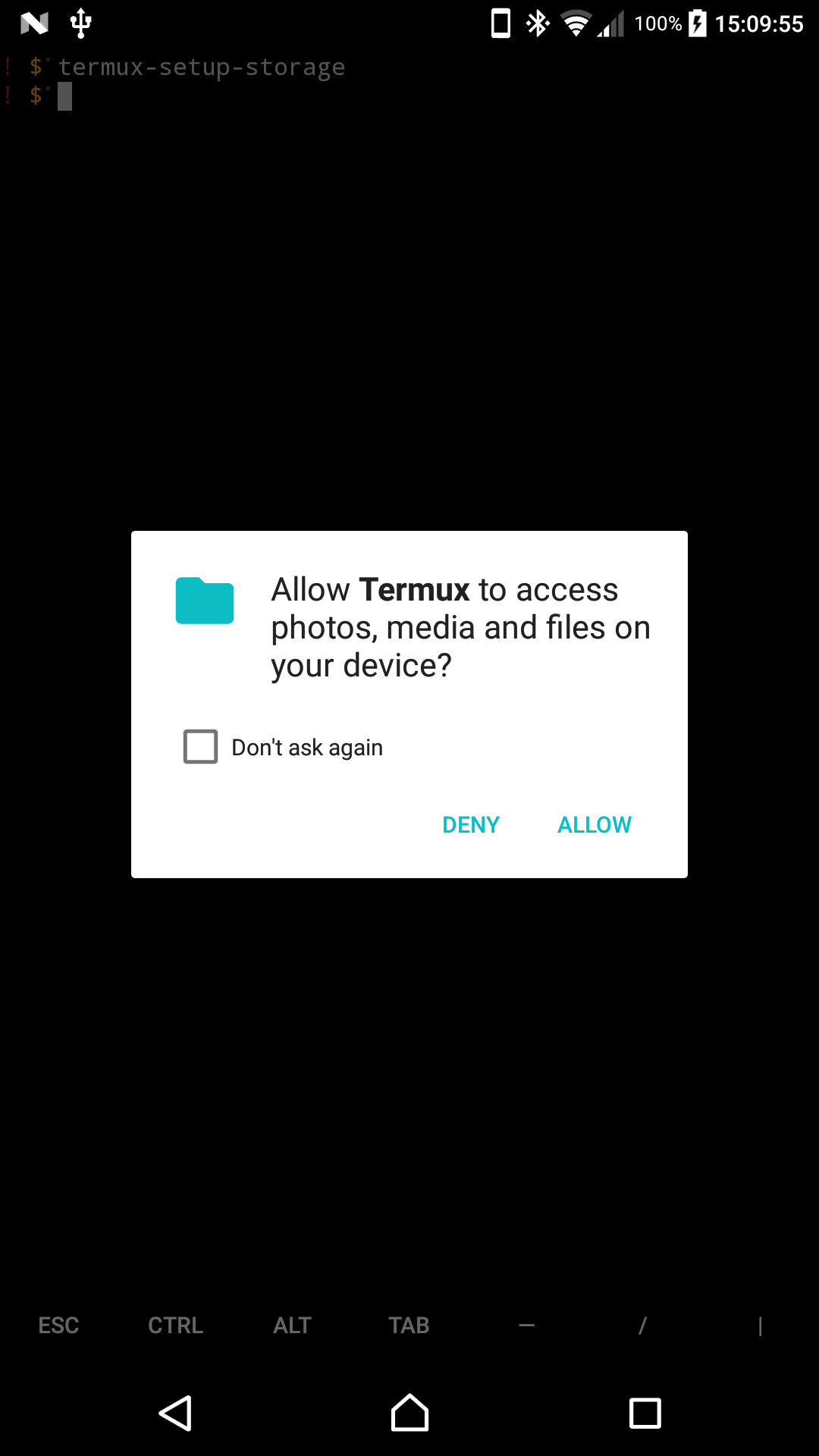Internal and external storage
From Termux Wiki
There are three main types of storage in Termux:
- App-private storage: Files put in $HOME, available from inside Termux (or when explictly picked, when e.g. attaching a file to a mail).
- Shared internal storage: Storage in the device available to all apps. On Android 6.0 this requires the user to explicitly grant access to for Termux to access it.
- External storage: Storage on external SD cards. Each app has a private folder on the external SD card, and interchange between them needs to use a special API not yet available in Termux.
To access shared and external storage you need to run termux-setup-storage. You will then be prompted to "Allow Termux access photos, media and files on your device", which you should allow.

Executing termux-setup-storage ensures:
- That permission to shared storage is granted to Termux when running on Android 6.0 or later.
- That an app-private folder on external storage is created (if external storage exists).
- That a folder $HOME/storage is created.
$HOME/storage
The contents of the created $HOME/storage folder are symlinks to different storage folders:
- The root of the shared storage between all apps.
~/storage/shared
- The standard directory for downloads from e.g. the system browser.
~/storage/downloads
- The traditional location for pictures and videos when mounting the device as a camera.
~/storage/dcim
- Standard directory in which to place pictures that are available to the user.
~/storage/pictures
- Standard directory in which to place any audio files that should be in the regular list of music for the user.
~/storage/music
- Standard directory in which to place movies that are available to the user.
~/storage/movies
- Symlink to a Termux-private folder on external storage (only if external storage is available).
~/storage/external